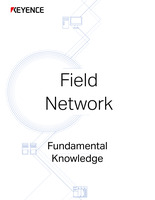OPC UA
This section explains OPC UA.
What Is OPC UA?
OPC UA is an international standard formulated by the OPC Foundation. It was developed to be a standard that allows access using a standardized access method without the need to change vendor-specific programs when devices from different manufacturers or different types of devices are connected. Clients with a certificate are connected to address space in the server, the structure of which is highly secure and platform independent. For this reason, the OPC UA protocol has been adopted for use as information communication infrastructure in various organizations.
Wiring Method and Communication Protocol
Wiring method
This network is wired based on general-purpose Ethernet. General-purpose Ethernet communication can be used on the same network.
Communication protocol
Communication is performed using the OPC UA protocol via the server/client method.
Information models, which define various information, such as data name, data size, and data endianness, are created on the server, and clients read out defined variable information by reading the corresponding information model. Protocol-specified information models are read and written when ordinary data strings are read and written. This does not require processing such as data interpretation, so connections are simple.
Characteristics
OPC UA has the following characteristics.
Structure is independent of platform
One of the OPC standards released before OPC UA is OPC classic. OPC classic uses the Windows functions as core technologies, and thus supports only Windows as the OS. OPC UA does not use Windows functions as core technologies and thus can be easily used for standards specified for general-purpose devices, such as host PCs and PLCs, which is a factor in the increasing number of connectable devices.
Definable information models
The data areas to read and write during communication are defined as information models by combining variables in the server with various information. Connected clients can read and write data by simply reading out an information model and specifying variables, without the need to determine the data interpretation method.
Defined information models can be used as common interfaces. Standard information models called companion information models are defined in each industry. Representative examples include Euromap for molding machines and PackML for packaging machines. When devices that support the same companion information model are selected, a host device can perform reading and writing with all devices using the same program by simply specifying an IP address for each device.
Secure communication using authentication
Servers create and manage data areas called address space. When clients access the address space, the authentication function is used and communication is encrypted to provide strong security.





